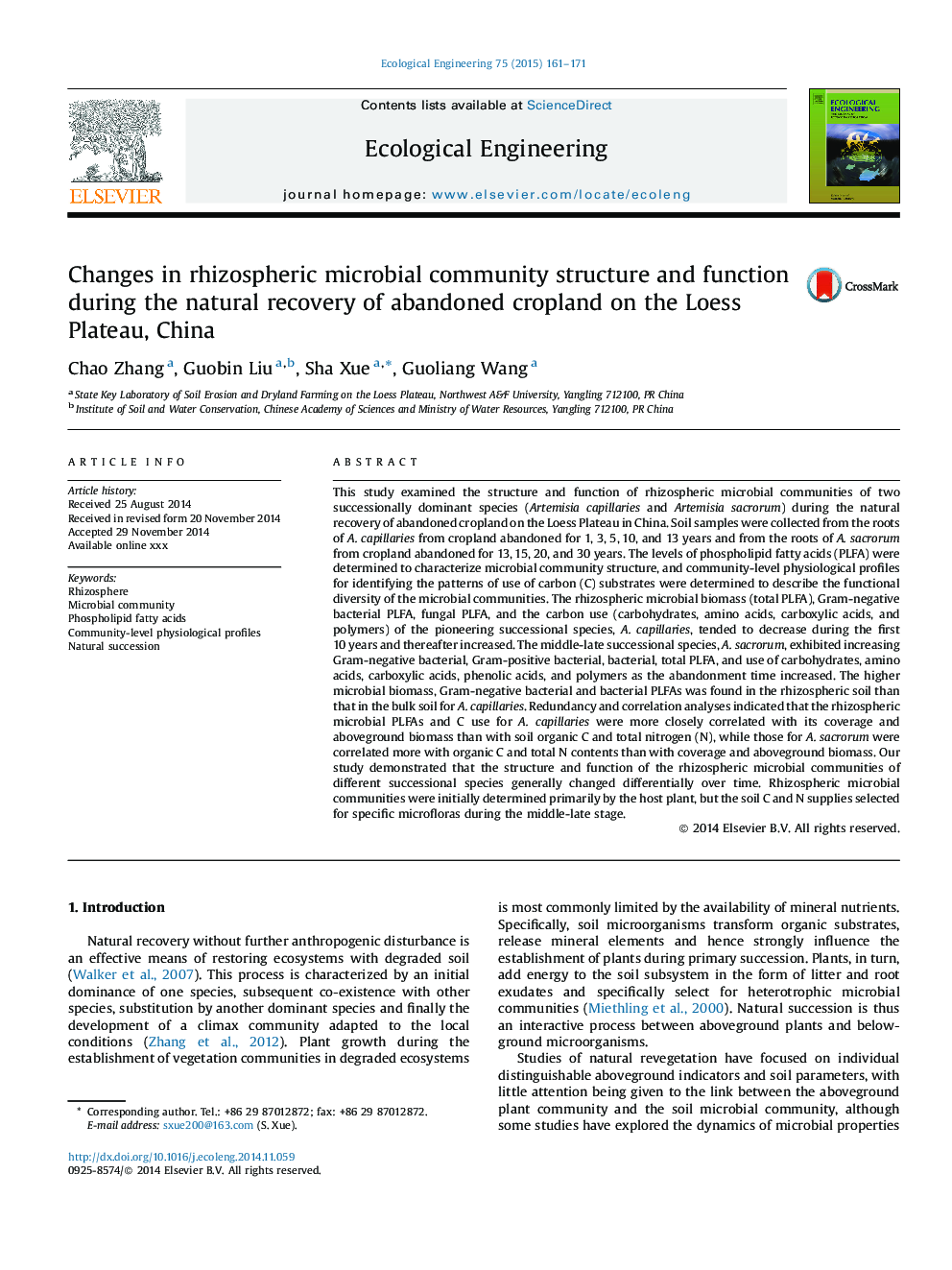| کد مقاله | کد نشریه | سال انتشار | مقاله انگلیسی | نسخه تمام متن |
|---|---|---|---|---|
| 6301691 | 1618024 | 2015 | 11 صفحه PDF | دانلود رایگان |
عنوان انگلیسی مقاله ISI
Changes in rhizospheric microbial community structure and function during the natural recovery of abandoned cropland on the Loess Plateau, China
دانلود مقاله + سفارش ترجمه
دانلود مقاله ISI انگلیسی
رایگان برای ایرانیان
کلمات کلیدی
موضوعات مرتبط
علوم زیستی و بیوفناوری
علوم کشاورزی و بیولوژیک
بوم شناسی، تکامل، رفتار و سامانه شناسی
پیش نمایش صفحه اول مقاله

چکیده انگلیسی
This study examined the structure and function of rhizospheric microbial communities of two successionally dominant species (Artemisia capillaries and Artemisia sacrorum) during the natural recovery of abandoned cropland on the Loess Plateau in China. Soil samples were collected from the roots of A. capillaries from cropland abandoned for 1, 3, 5, 10, and 13 years and from the roots of A. sacrorum from cropland abandoned for 13, 15, 20, and 30 years. The levels of phospholipid fatty acids (PLFA) were determined to characterize microbial community structure, and community-level physiological profiles for identifying the patterns of use of carbon (C) substrates were determined to describe the functional diversity of the microbial communities. The rhizospheric microbial biomass (total PLFA), Gram-negative bacterial PLFA, fungal PLFA, and the carbon use (carbohydrates, amino acids, carboxylic acids, and polymers) of the pioneering successional species, A. capillaries, tended to decrease during the first 10 years and thereafter increased. The middle-late successional species, A. sacrorum, exhibited increasing Gram-negative bacterial, Gram-positive bacterial, bacterial, total PLFA, and use of carbohydrates, amino acids, carboxylic acids, phenolic acids, and polymers as the abandonment time increased. The higher microbial biomass, Gram-negative bacterial and bacterial PLFAs was found in the rhizospheric soil than that in the bulk soil for A. capillaries. Redundancy and correlation analyses indicated that the rhizospheric microbial PLFAs and C use for A. capillaries were more closely correlated with its coverage and aboveground biomass than with soil organic C and total nitrogen (N), while those for A. sacrorum were correlated more with organic C and total N contents than with coverage and aboveground biomass. Our study demonstrated that the structure and function of the rhizospheric microbial communities of different successional species generally changed differentially over time. Rhizospheric microbial communities were initially determined primarily by the host plant, but the soil C and N supplies selected for specific microfloras during the middle-late stage.
ناشر
Database: Elsevier - ScienceDirect (ساینس دایرکت)
Journal: Ecological Engineering - Volume 75, February 2015, Pages 161-171
Journal: Ecological Engineering - Volume 75, February 2015, Pages 161-171
نویسندگان
Chao Zhang, Guobin Liu, Sha Xue, Guoliang Wang,